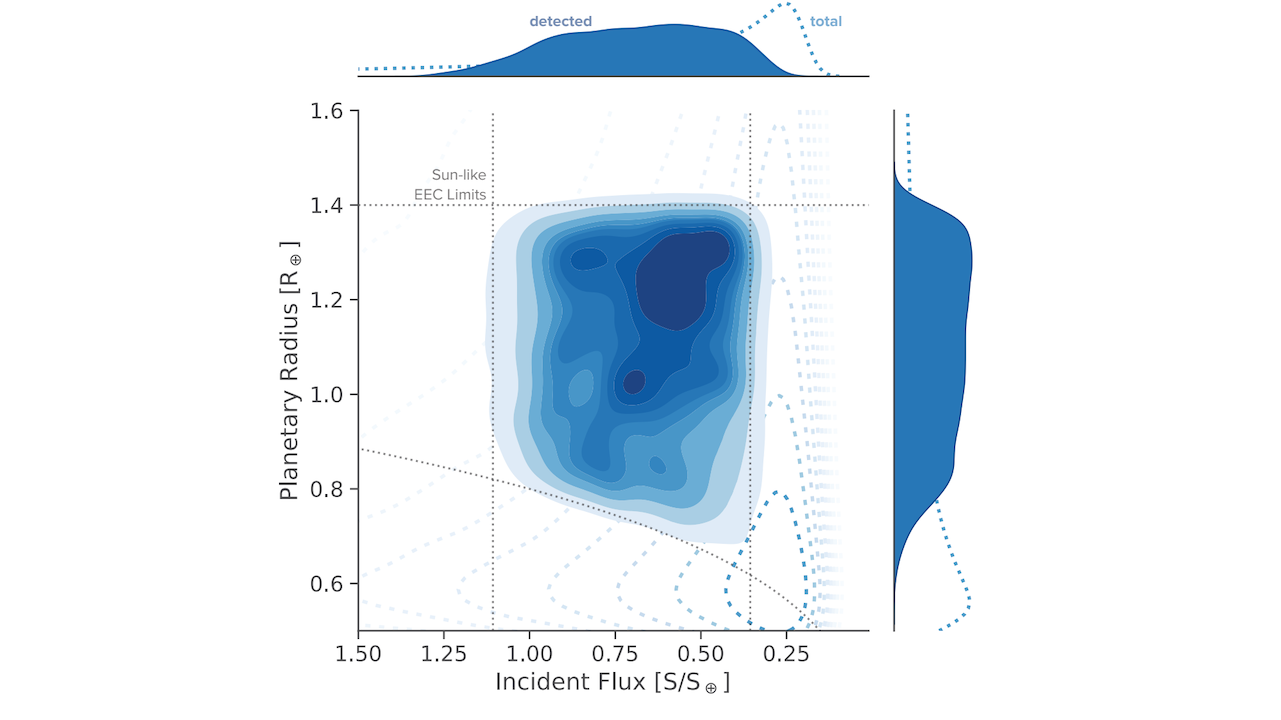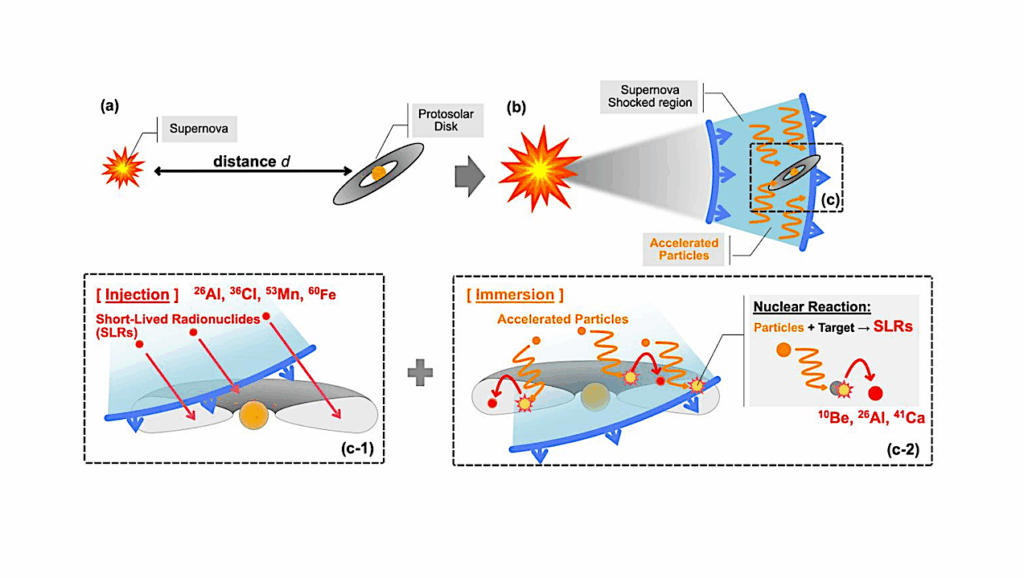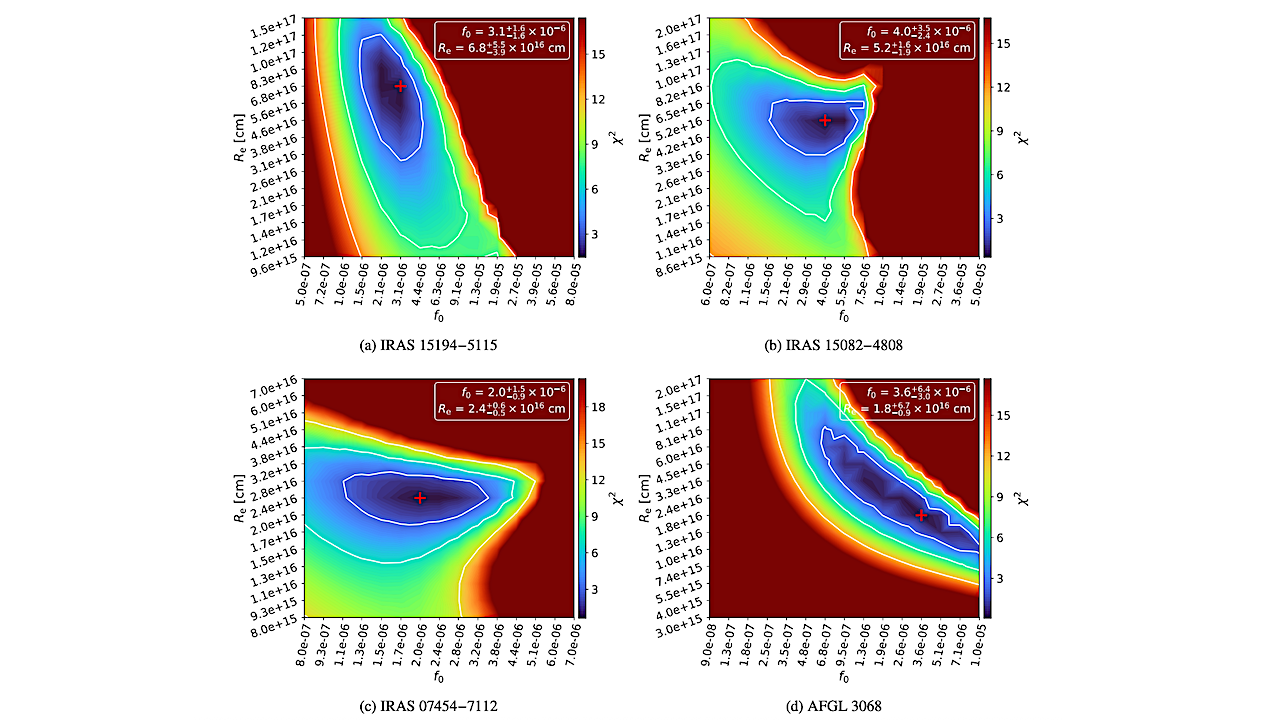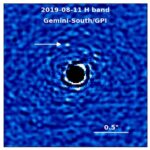Now Reading: Detecting Atmospheric CO2 Trends as Population-Level Signatures for Long-Term Stable Water Oceans and Biotic Activity on Temperate Terrestrial Exoplanets
-
01
Detecting Atmospheric CO2 Trends as Population-Level Signatures for Long-Term Stable Water Oceans and Biotic Activity on Temperate Terrestrial Exoplanets
Detecting Atmospheric CO2 Trends as Population-Level Signatures for Long-Term Stable Water Oceans and Biotic Activity on Temperate Terrestrial Exoplanets


Distribution of simulated EEC yield (solid contours) and underlying planet population (dotted contours) around FGK-type stars within 20 pc. We show the planetary radius over incident flux distribution, where the color shading represents the relative density of planet occurrences in this parameter space. The colored contours enclose 10% to 100% of the total planet counts, with the innermost contour indicating the highest-density regions. Grey dashed lines represent EEC boundaries around a Sun-like star with S/S⊕ ∈ [0.356, 1.107] and R/R⊕ ∈ [0.8 · S 0.25, 1.4] (Kopparapu et al. 2014; Stark et al. 2019; Quanz et al. 2022b). Top and right margin plots show the individual distributions of incident flux and planetary radius of detected and total underlying populations. Underlying synthetic planet populations are based on Kammerer et al. (2022). — astro-ph.EP
Identifying key observables is essential for enhancing our knowledge of exoplanet habitability and biospheres, as well as improving future mission capabilities.
While currently challenging, future observatories such as the Large Interferometer for Exoplanets (LIFE) will enable atmospheric observations of a diverse sample of temperate terrestrial worlds.
Using thermal emission spectra that represent conventional predictions of atmospheric CO2 variability across the Habitable Zone (HZ), we assess the ability of the LIFE mission – as a specific concept for a future space-based interferometer – to detect CO2 trends indicative of the carbonate-silicate (Cb-Si) weathering feedback, a well-known habitability marker and potential biological tracer. Therefore, we explore the feasibility of differentiating between CO2 trends in biotic and abiotic planet populations.
We create synthetic exoplanet populations based on geochemistry-climate predictions and perform retrievals on simulated thermal emission observations. The results demonstrate the robust detection of population-level CO2 trends in both biotic and abiotic scenarios for population sizes as small as 30 Exo-Earth Candidates (EECs) and the lowest assessed spectrum quality in terms of signal-to-noise ratio, S/N = 10, and spectral resolution, R = 50. However, biased CO2 partial pressure constraints hinder accurate differentiation between biotic and abiotic trends.
If these biases were corrected, accurate differentiation could be achieved for populations with ≥ 100 EECs. We conclude that LIFE can effectively enable population-level characterization of temperate terrestrial atmospheres and detect Cb-Si cycle driven CO2 trends as habitability indicators. Nevertheless, the identified biases underscore the importance of testing atmospheric characterization performance against the broad diversity expected for planetary populations.
![Distribution of simulated EEC yield (solid contours) and underlying planet population (dotted contours) around FGK-type stars within 20 pc. We show the planetary radius over incident flux distribution, where the color shading represents the relative density of planet occurrences in this parameter space. The colored contours enclose 10% to 100% of the total planet counts, with the innermost contour indicating the highest-density regions. Grey dashed lines represent EEC boundaries around a Sun-like star with S/S⊕ ∈ [0.356, 1.107] and R/R⊕ ∈ [0.8 · S 0.25, 1.4] (Kopparapu et al. 2014; Stark et al. 2019; Quanz et al. 2022b). Top and right margin plots show the individual distributions of incident flux and planetary radius of detected and total underlying populations. Underlying synthetic planet populations are based on Kammerer et al. (2022). -- astro-ph.EP](https://astrobiology.com/wp-content/uploads/2025/06/Detecting-Atmospheric-CO2-Trends.png)
Schematic of our trend survey and inference methodology. We generate synthetic atmospheric populations by associating each planet with an incident flux S, injecting the predicted Cb-Si cycle-driven pCO2 variability across the HZ, and assigning observational uncertainties δpCO2. These populations then serve as input for the trend retrieval routine. — astro-ph.EP
Janina Hansen, Daniel Angerhausen, Sascha P. Quanz, Derek Vance, Björn S. Konrad, Emily O. Garvin, Eleonora Alei, Jens Kammerer, Felix A. Dannert
Comments: Accepted for publication in ApJ. 37 pages, 24 figures, 3 tables
Subjects: Earth and Planetary Astrophysics (astro-ph.EP); Instrumentation and Methods for Astrophysics (astro-ph.IM)
Cite as: arXiv:2505.23230 [astro-ph.EP] (or arXiv:2505.23230v1 [astro-ph.EP] for this version)
https://doi.org/10.48550/arXiv.2505.23230
Focus to learn more
Submission history
From: Janina Hansen
[v1] Thu, 29 May 2025 08:31:15 UTC (4,578 KB)
https://arxiv.org/abs/2505.23230
Astrobiology,
Stay Informed With the Latest & Most Important News
-
 012024 in Review: Highlights from NASA in Silicon Valley
012024 in Review: Highlights from NASA in Silicon Valley -
 02Panasonic Leica Summilux DG 15mm f/1.7 ASPH review
02Panasonic Leica Summilux DG 15mm f/1.7 ASPH review -
 03From Polymerization-Enabled Folding and Assembly to Chemical Evolution: Key Processes for Emergence of Functional Polymers in the Origin of Life
03From Polymerization-Enabled Folding and Assembly to Chemical Evolution: Key Processes for Emergence of Functional Polymers in the Origin of Life -
 04How New NASA, India Earth Satellite NISAR Will See Earth
04How New NASA, India Earth Satellite NISAR Will See Earth -
 05And Thus Begins A New Year For Life On Earth
05And Thus Begins A New Year For Life On Earth -
 06Astronomy Activation Ambassadors: A New Era
06Astronomy Activation Ambassadors: A New Era -
07SpaceX launch surge helps set new global launch record in 2024




















